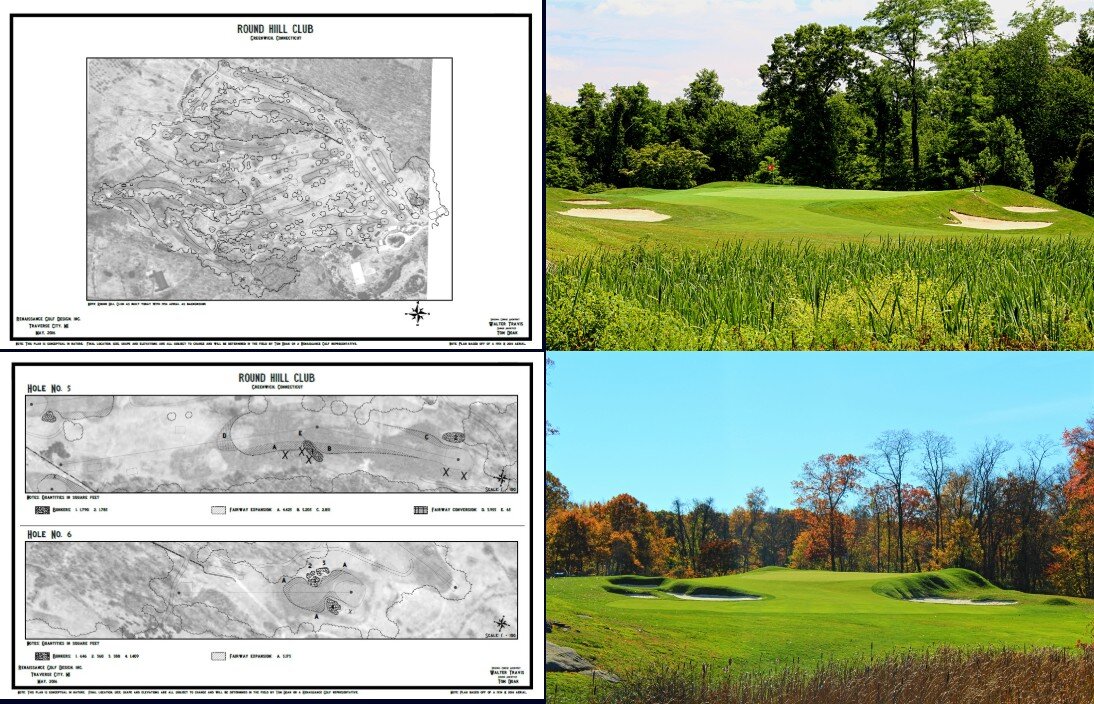PROJECTS
Throughout my career I have had the opportunity to participate and manage both small and large scale construction projects. As golf courses age, they subsequently require varying degrees of renovation. This may come in the form of recapturing the dimension and design originally intended or even making changes to keep up with advancements in the game of golf. An effective golf course Superintendent must have the ability to implement these changes “in house” as well as work with external contractors and architects when their expertise is required.
Below please find a collection of images detailing my construction experience, including but not limited to: complete course restoration, bunker renovation and maintenance, irrigation/drainage installation, native fescue management/expansion and more.





















Bunker Renovation/Green Surround Re-shaping
Helped plan, manage and carry out a $1.4 million dollar bunker restoration that included reshaping green surrounds and repositioning bunkers, installing Better Billy Bunker liners and expanding fairways to coincide with the new layout. All existing irrigation was removed and reinstalled in house to reduce the overall cost of the project.
Playing a significant role in this process allowed me the opportunity to be involed in the planning process from the beginning until the final peice of sod was put down. I participated in preliminary sub committee meetings, walked the golf course with the architect and membership and worked intimately with the architect and contractors throughout.
USGA Green Installation
As part of the bunker restoration, our main putting green was recontoured to better mimic the greens on the golf course. The original green was excavated and USGA specifications were used to build a new sand based A-4 bentgrass putting green. All irrigation was removed and reinstalled in house.
Native Fescue Establishment
Tree management is an ongoing practice necessary to create optimal growing conditions for turf. Where extensive tree work is done, instead of converting all area to maintained low-cut turfgrass, a majority of these areas are transitioned to low maintenance native fescue areas. Property lines and internal pockets of brush and scrub can become unsightly and overgrown allowing for the opportunity to add to existing acreage of fescue natives. This helps maintain wildlife habitat and adds interest and beauty to the property.
Audubon Cooperative Sanctuary Program Initiatives
As part of the Audubon Cooperative Sanctuary Program, Round Hill must actively seek out opportunities to better impact our surrounding environment. We recently tranisitioned an area after extensive tree removal to better serve our pollinator populations and Monarch Butterfly populations. This area, adjacent to an existing stream and wetland, regionally specific wildflowers and milkweed were seeded. Simultaneously, we created an area that provides shelter for birds and smaller mammals, provided pollen sources for bees, and planted milkweed to promote Monarch populations all while creating a low maintenance area free of pesticides next to fragile wetland environment. Still in its infancy, these areas will mature and highlight the convergence of holes 3, 4 and 6.
Drainage Installation
Drainage installation is an annual necessity, typically done during the offseason. Moving water from poorly drained soils promotes turf health and reduces disease pressure during the growing season. Smaller projects are addressed in house. I have worked closely with outside contractors, specifically Turf Drainage Company of America regarding a drainage master plan to better address the property in its entirety.